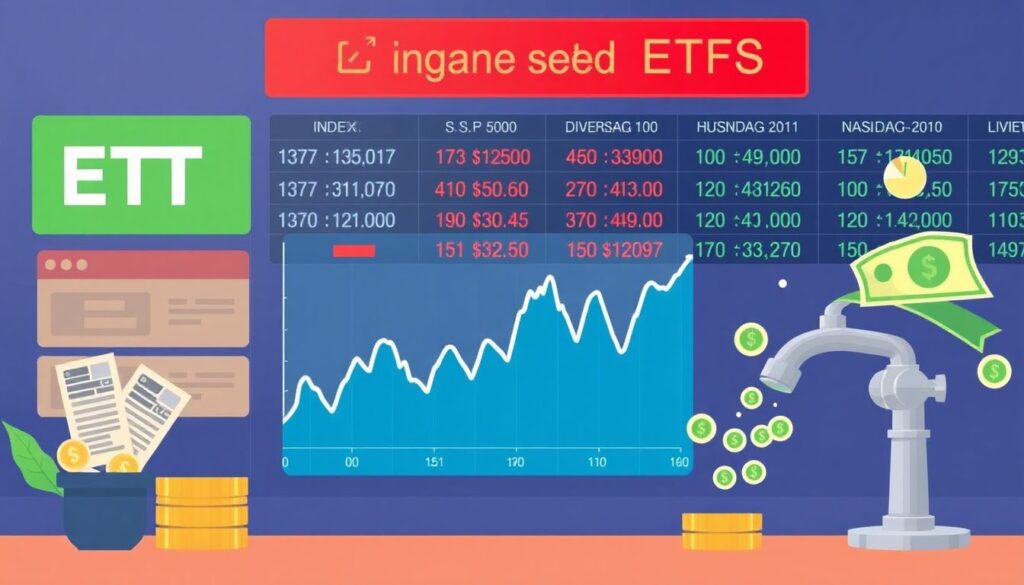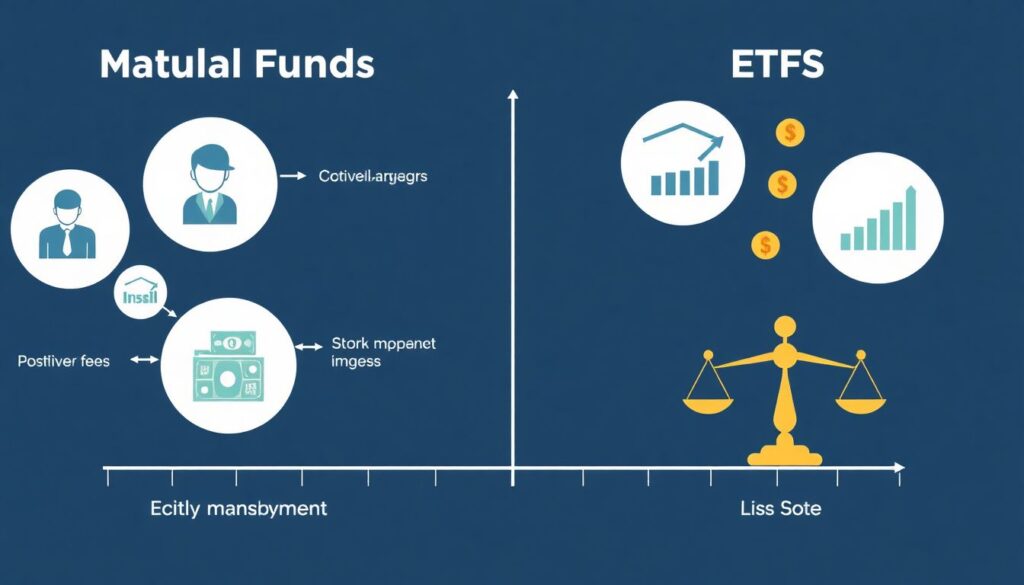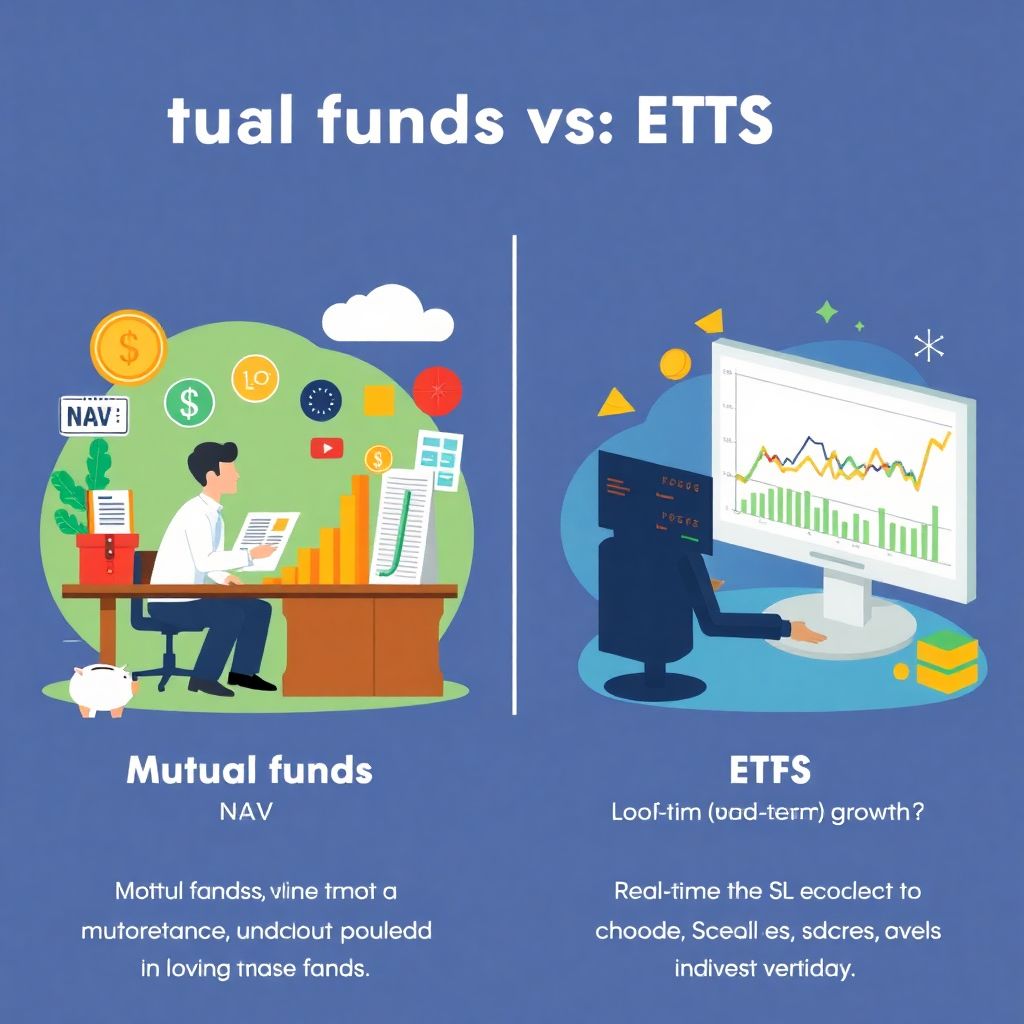Understanding Pooled Investments: Mutual Funds vs ETFs
What Are Pooled Investments?
Pooled investments are financial vehicles that gather money from multiple investors to purchase a diversified portfolio of assets. This model allows individual investors to access broader market exposure, professional management, and asset diversification without needing large capital outlays. The two most commonly used pooled investment options are mutual funds and exchange-traded funds (ETFs). While both serve similar purposes, they differ in structure, management style, liquidity, and cost.
Mutual Funds: Actively Managed Portfolios for Long-Term Investors
Mutual funds are traditionally managed by professional portfolio managers who actively select securities to meet a specific investment objective. These funds are often actively managed, which means the fund manager makes regular buy and sell decisions aiming to outperform a benchmark index.
For example, the Fidelity Contrafund (FCNTX), one of the largest actively managed mutual funds, focuses on growth stocks and has consistently adjusted its holdings in reaction to market conditions. As of 2024, it holds over $100 billion in assets under management and charges an expense ratio of around 0.82%.
Key Technical Details:
– Pricing: Mutual funds are priced once per day after the market closes. The price is based on the net asset value (NAV) of the underlying holdings.
– Minimum investment: Often ranges from $500 to $3,000 for initial investments.
– Fees: Expense ratios for actively managed mutual funds typically range from 0.5% to over 1.5%.
– Tax implications: Investors may be liable for capital gains distributions, even if they didn’t sell shares.
Mutual funds are ideal for long-term investors who prefer a hands-off approach and are willing to pay higher fees for active management and potential outperformance.
ETFs: Flexible and Cost-Efficient Market Instruments

Exchange-traded funds (ETFs) are a newer class of pooled investments that trade on stock exchanges like individual stocks. Most ETFs are passively managed and aim to replicate the performance of a specific index (e.g., S&P 500, Nasdaq-100). Their structure provides both diversification and liquidity, making them attractive for both retail and institutional investors.
A prime example is the SPDR S&P 500 ETF Trust (SPY), which tracks the S&P 500 index. As of early 2024, it manages over $400 billion in assets and has an ultra-low expense ratio of 0.09%, making it a cost-effective choice for broad market exposure.
Key Technical Details:
– Trading flexibility: ETFs can be bought or sold throughout the trading day at market prices.
– Expense ratios: Generally lower than mutual funds, often below 0.2% for index-based ETFs.
– Tax efficiency: Due to the “in-kind” redemption process, ETFs tend to distribute fewer capital gains, making them more tax-efficient.
– No minimum investment: Investors can purchase as little as one share, making ETFs accessible to all budgets.
ETFs are particularly suitable for investors who value liquidity, low costs, and the ability to manage their portfolios dynamically throughout the trading day.
Comparative Analysis: Mutual Funds vs ETFs

Choosing between mutual funds and ETFs depends on your investment goals, time horizon, and cost sensitivity. Let’s compare them across several dimensions:
1. Management Style
– Mutual funds often use active management, aiming to beat the market.
– ETFs typically use passive strategies, tracking an index.
2. Liquidity and Trading
– Mutual funds settle at the end-of-day NAV.
– ETFs trade intraday like stocks, offering real-time pricing and flexibility.
3. Costs and Fees
– Mutual funds usually have higher expense ratios and may charge front-end or back-end loads.
– ETFs have lower expense ratios and no sales loads, but may incur brokerage commissions (though many platforms now offer commission-free ETF trading).
4. Tax Efficiency
– Mutual funds frequently distribute capital gains, even in down years.
– ETFs are more tax-efficient due to their unique redemption process.
5. Accessibility
– Mutual funds may have minimum investment thresholds.
– ETFs can be bought in single-share increments, often with no minimum requirement.
Real-World Example: Building a Retirement Portfolio
Consider an investor planning for retirement in 30 years. They seek diversified exposure to U.S. and international equities, as well as bonds. One approach could be to invest in a target-date mutual fund, such as Vanguard Target Retirement 2055 Fund (VFFVX), which automatically adjusts the asset allocation over time and requires minimal intervention.
Alternatively, a more hands-on investor might construct a similar portfolio using ETFs:
– SPY for U.S. equities
– VXUS for international equities
– BND for U.S. bonds
This ETF-based strategy may offer lower fees and more control over asset allocation, but it requires periodic rebalancing and a basic understanding of market dynamics.
Which One Should You Choose?
There is no one-size-fits-all answer. Use the following guide to help decide:
1. Choose mutual funds if:
– You prefer professional management.
– You’re investing through a retirement plan like a 401(k) where mutual funds are the default option.
– You’re focused on long-term growth and are less concerned with daily trading.
2. Choose ETFs if:
– You want low-cost exposure to a specific market.
– You value flexibility and real-time trading.
– You’re building a DIY portfolio in a brokerage account.
Conclusion: A Strategic Decision
Understanding the differences between mutual funds and ETFs is crucial for making informed investment decisions. While both serve as effective tools for diversification and long-term growth, their distinct features cater to different investor profiles. Whether you lean toward the active oversight of mutual funds or the cost-efficiency and flexibility of ETFs, the key is aligning the investment vehicle with your financial goals, risk tolerance, and investment timeline.

